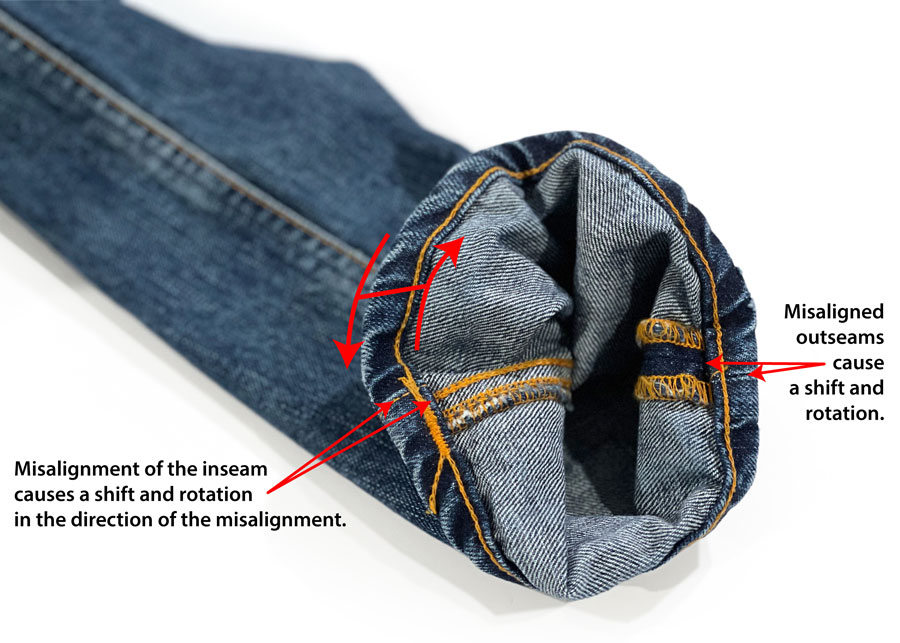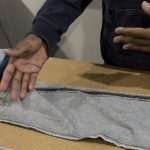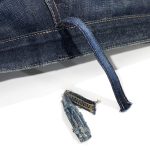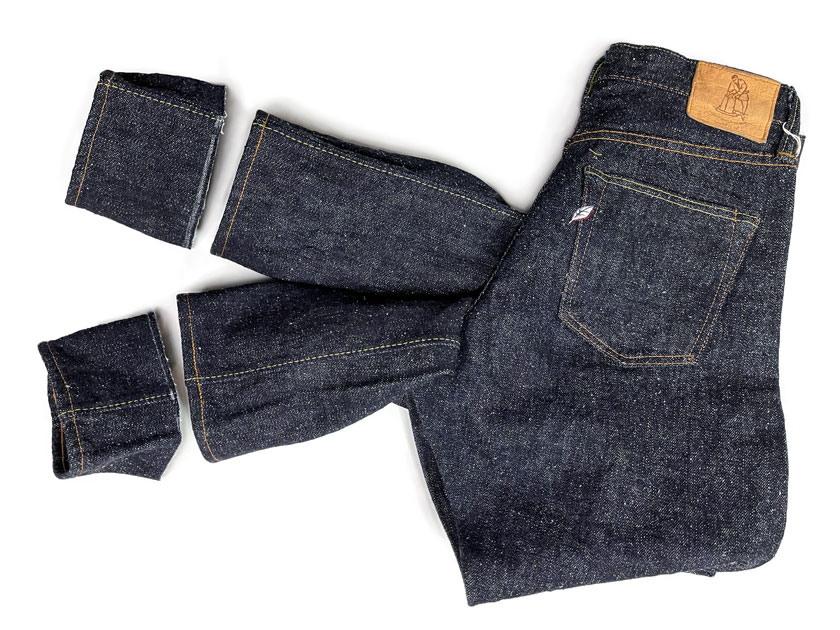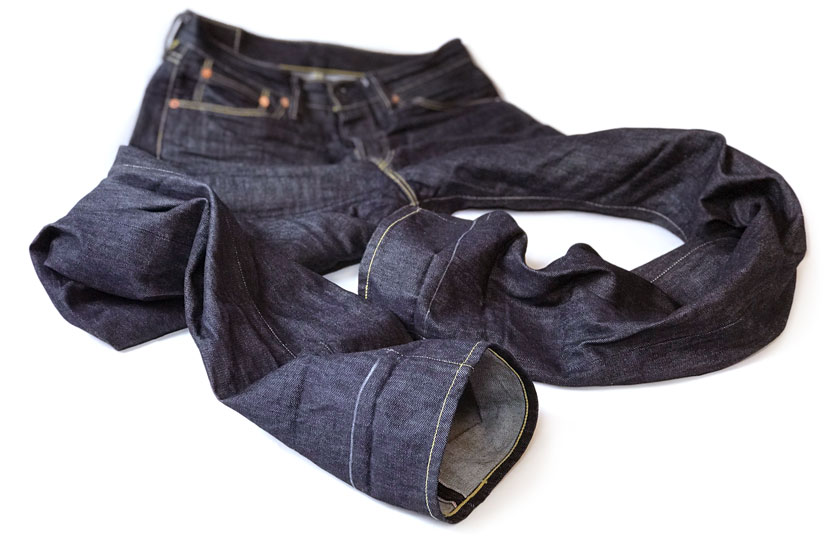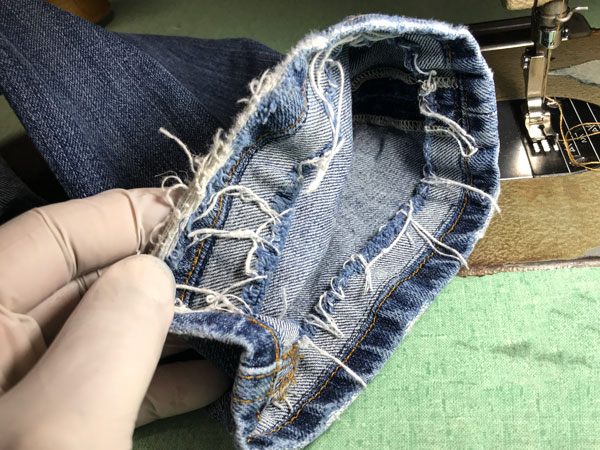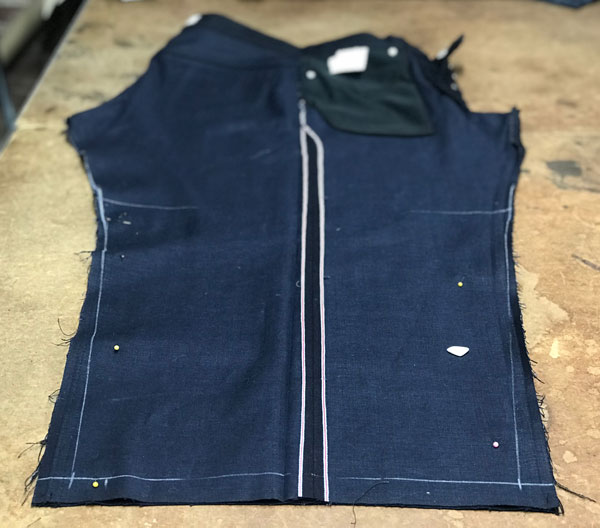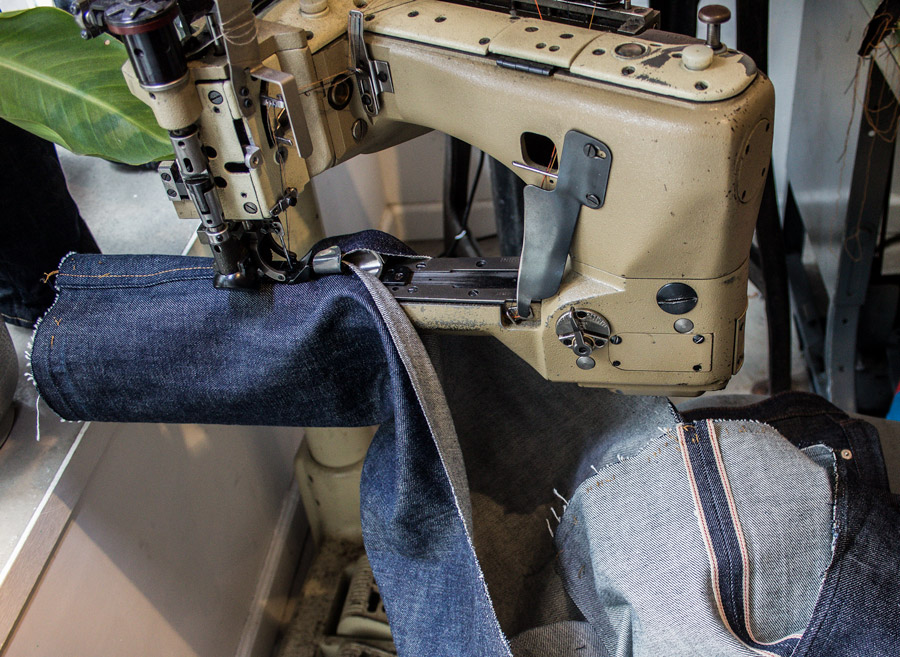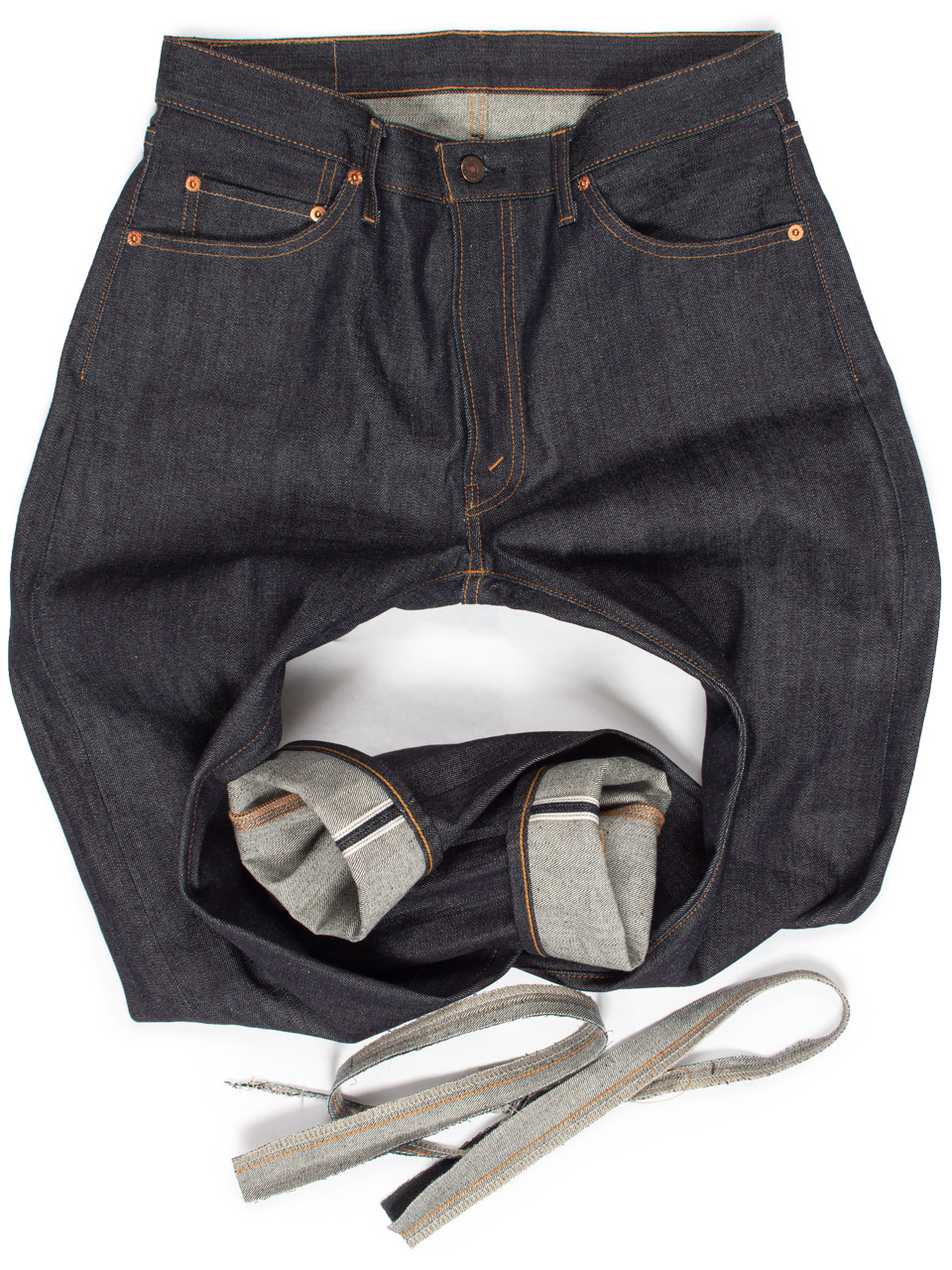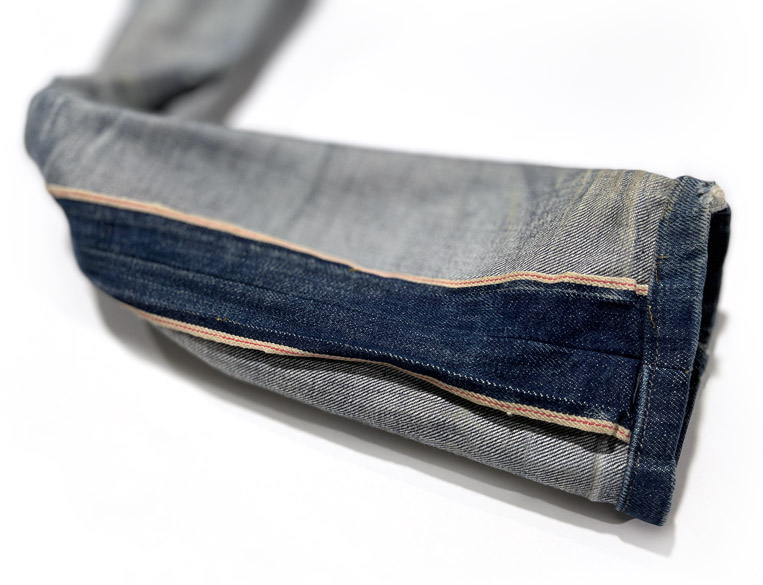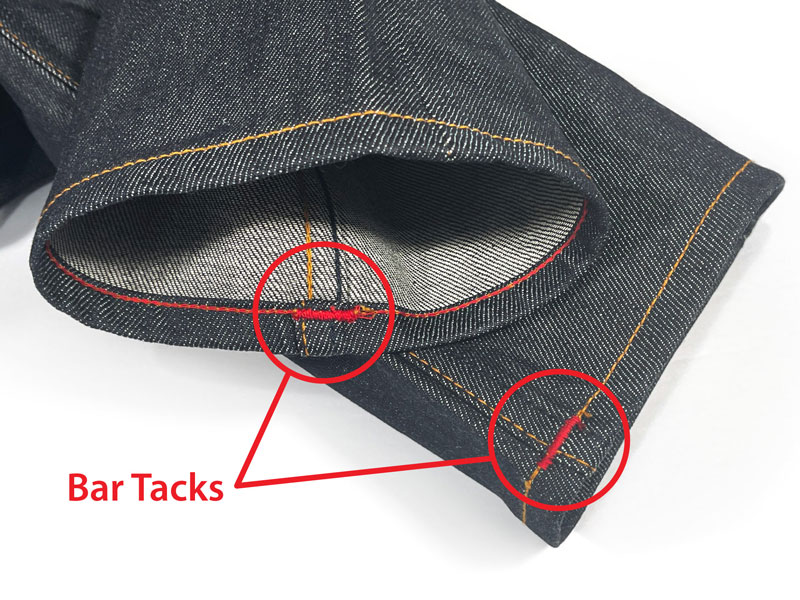
What is a “bar tack” (also spelled “bartack”)? This is a question we get almost every day because our denim service is one of the very few that offers bar tacking. The close-up image above shows two red bar tacks sewn onto the hem of a pair of Gustin blue jeans. When you choose to add bar tacking in the dropdown box of our chain stitch hemming service, this is the type of stitching that will be added.
First, an explanation for the majority of our customers who are interested in having their jeans hemmed. The close-up image above shows two red bar tacks sewn onto the hem of a pair of Gustin blue jeans. When you choose to add bar tacking in the dropdown box of our chain stitch hemming service, this is the type of stitching that will be added.
Brands like Gustin, Nudie, and Brave Star jeans have bar tacks sewn over the chain stitching on the hems, both as a branding identifier and to reinforce the sewing. Although they add a bit of extra security by preventing the chain stitch from unraveling, they are not found on the vast majority of jeans. We usually inform our customers that it is not necessary to add them.

Definition Summary
A bar tack is a machine-made stitch with a zigzag pattern used to reinforce areas on clothing that experience high stress, such as where belt loops join, pocket corners and flaps, hip seams, and the fly of jeans.
bar tack | bär tak | noun a zigzag stitch made by industrial sewing machines to strengthen areas of a garment with potential weak spots or other sewn items.
bar-tacked adjective
bar tacking noun







